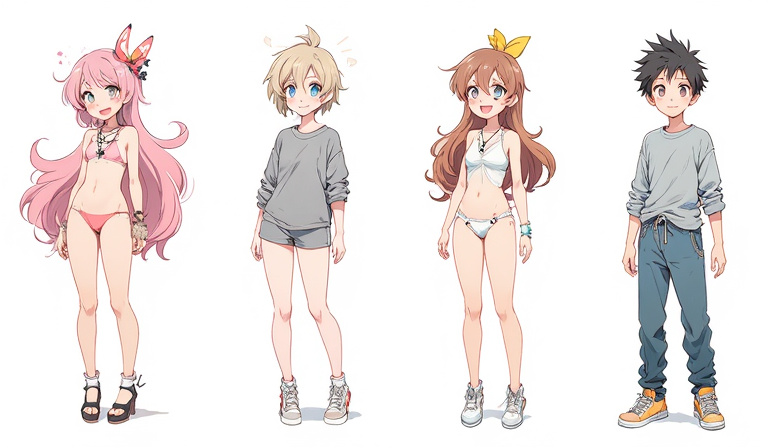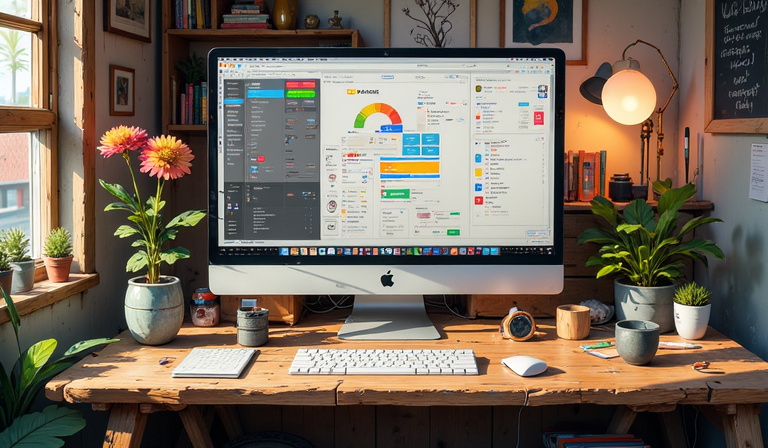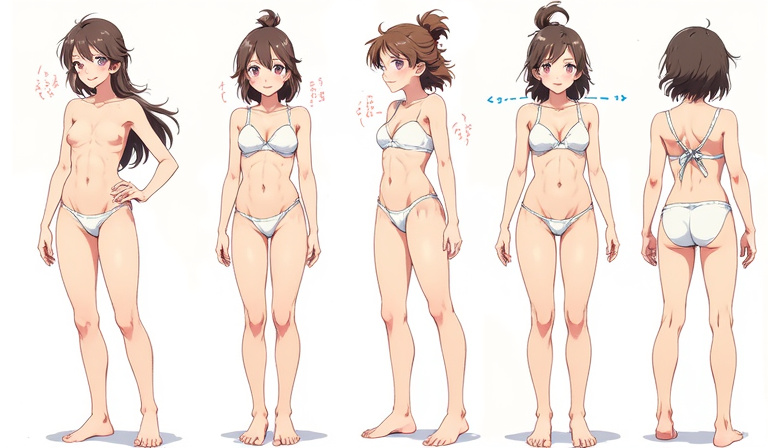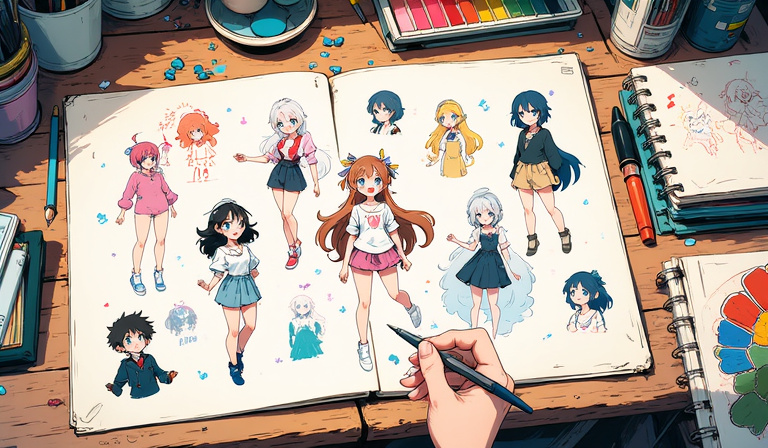The journey of creating anime character concept art is both challenging and rewarding. Whether you're an aspiring animator, manga artist, or simply passionate about anime, understanding the fundamentals of character design will help you bring your artistic visions to life. This guide will take you from basic sketches to fully realized character designs, incorporating both traditional and digital techniques.
You can also check out ours Anime Prompts guide for creators that provide basic anime prompting with examples

Understanding the Basics of Anime Art
Anime art, which originated in Japan, has evolved into a globally recognized style with distinct characteristics. The hallmarks of anime include large expressive eyes, simplified facial features, and often exaggerated body proportions. What makes anime unique is its ability to convey complex emotions through seemingly simple designs.
When I first started studying anime art, I discovered that despite its stylized nature, it's grounded in fundamental artistic principles. Modern anime encompasses various sub-styles, from the hyper-realistic look of works like "Monster" to the cute, simplified aesthetic of "Chi's Sweet Home." Understanding these variations helps in developing your own artistic voice.
Essential Tools and Software for Anime Character Design
My journey in anime art began with traditional media, and I still believe in the importance of mastering basic tools first. Essential traditional supplies include:
- High-quality drawing pencils (HB to 6B range)
- Smooth bristol paper or marker paper
- Fine-liner pens and markers
- Erasers (both kneaded and plastic)

For digital creation, I primarily use a drawing tablet with professional software. Clip Studio Paint has become my go-to program due to its anime-specific features, though Photoshop remains excellent for final touches and effects. The key is finding tools that feel natural and support your creative process.
Creating Your First Anime Character
The most exciting part of character design is the initial creation process. I always start by brainstorming concepts, considering who my character is rather than just how they look. What's their story? What motivates them? These questions help inform design choices.
I begin with loose sketches, focusing on basic shapes and silhouettes. The character's personality should be evident even in their simplest form. A shy character might have softer lines and closed body language, while a confident hero might feature more angular shapes and dynamic poses.
Mastering Anatomy and Proportion in Anime Art
Understanding human anatomy is crucial, even when working in a stylized format. I spent countless hours studying real human proportions before learning how to deliberately break these rules for anime styling. The typical anime character is often between 6 to 8 heads tall, with larger eyes and a smaller nose and mouth than realistic proportions.

Adding Personality: Expressions and Poses
Expressions are the heart of anime character design. I focus on creating a range of emotions that feel authentic to the character. The eyes particularly carry much of the emotional weight in anime style, so I pay special attention to their shape and detail.
Dynamic poses bring characters to life. I've learned to sketch quickly and loosely to capture natural movement, then refine the lines later. Even subtle poses can convey volumes about a character's personality.
Refining Your Character Design
The refinement stage is where your character truly comes together. I carefully consider clothing choices, hairstyles, and accessories that reflect the character's personality and story. Each element should serve a purpose, whether practical or symbolic.
During this phase, I often create multiple iterations, experimenting with different design elements until everything feels cohesive. Don't be afraid to revise and adjust – some of my best designs came from multiple rounds of refinement.
Coloring Your Anime Character
Color brings your character to life. I always start with a basic color palette that reflects the character's personality and role in the story. Understanding color theory helps create harmonious designs that catch the eye without overwhelming it.
When coloring digitally, I work in layers, starting with flat colors and gradually adding shading and highlights. This approach allows for easy adjustments and maintains consistency across different illustrations of the same character.
Tips and Tricks for Improvement
Consistent practice is essential for growth. I dedicate time each day to sketching, even if it's just for 15 minutes. Study the works of artists you admire, but don't simply copy them – analyze their techniques and incorporate what you learn into your own style.
Joining online art communities has been invaluable for my development. Feedback from fellow artists helps identify areas for improvement and provides fresh perspectives on your work.
Remember, mastering anime character concept art is a journey, not a destination. Each character you create builds upon your previous experiences and helps refine your skills. Keep practicing, stay curious, and don't be afraid to experiment with different styles and techniques.
Share your anime character creations with us and join our community of aspiring artists! Tag us on social media with #AnimeCharacterArt to showcase your work and connect with fellow creators.
